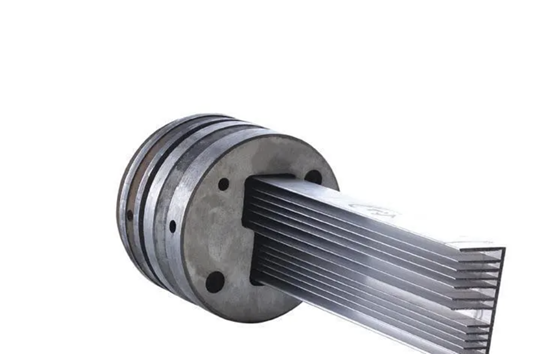Extrusion Mold Design for Aluminum
In the aluminum extrusion industry, mold design and manufacturing is key to product quality and production efficiency. Precise extrusion mold design minimizes tolerances and defects in the aluminum products. So good mold design and manufacturing is critical.
WHY Hugh’s Mold Design?
Hugh Aluminum has a team of experienced extrusion mold designers. We design to client-specific requirements so the mold shape and structure match the production requirements of the various aluminum profiles.
Custom Design
We work closely with our clients to fully understand their product requirements. This allows us to design molds that fit into their production process and market demand.
Fast Design Process
We use advanced CAD software to design molds quickly and accurately. This speeds up the design cycle and us.
Manufacturing High-Quality Extrusion Molds
Hugh Aluminum has high-carbon steel CNC machines for mold manufacturing. These machines meet the exacting requirements for aluminum extrusion molds. Our craftsmen have over 20 years of experience in mold manufacturing, every component is made to exact specifications. We have designed and manufactured over 3,000 molds, we can handle any job!
Full-Service Support
From mold design to aluminum extrusion to surface treatment, Hugh Aluminum has it all. Just send us your product design or mold drawings and we will deliver them to you.
In this industry where precision matters, Hugh Aluminum is here to support you.

What is the Aluminum Extrusion Mold?
Mold Structure
Aluminum extrusion molds have several parts:
- Upper Mold: This is the top part of the mold, with the extrusion and guide holes. It controls the aluminum during the extrusion process. The upper mold design must be strong and durable.
- Lower Mold: This part works with the upper mold to form the mold cavity. The lower mold structure is key to keeping the aluminum stable and consistent during extrusion.
- Mold Cavity: The shape and size of the mold cavity determine the cross-section of the final aluminum profile. This is customized according to the customer’s product.
- Guiding and Positioning System: This system ensures the upper and lower molds are aligned, preventing deviation during extrusion. Common guiding systems are guide posts, guide sleeves, and positioning pins.
- Cooling and Heating System: In some cases, cooling or heating channels are built into the mold to control the temperature during extrusion for a smooth process.
Mold Types
Aluminum extrusion molds are classified into two main types:
- Standard Molds: For common aluminum profiles with simple cavity design.
- Complex Molds: For profiles with complex shapes or special requirements, such as curved profiles or multi-cavity design.
Why We Need Extrusion Molds?
Extrusion molds can be customized to your needs.
Shaping
- Square and Rectangular Profiles: Used in construction, furniture, and other structural applications.
- Round Tubes: Used in construction, automotive, and machinery manufacturing.
- Complex Cross-Section Profiles: Trapezoidal, U-shaped, T-shaped profiles for specific applications like frames and brackets.
- Specialty Profiles: Radiator profiles and duct profiles for specific industries.
High Precision
- Computer-Aided Design (CAD): CAD software minimizes human error.
- CNC Machining: CNC machines ensure dimensions match design and prevent errors in later processing.
Production Efficiency
Fast Production:
- Heating and Extrusion Combination: Aluminum can be shaped in molds after heating in seconds, entire process.
- High-Volume Production: One mold design can produce large quantities of aluminum profiles for high-volume production lines, reducing time per product.
Continuous Production:
- Integrated Production: The design of extrusion machines allows mold change without stopping production.
- Less Downtime: Mold design minimizes wear and tear, and reduces downtime during mold change and production flow.
Versatility
Multiple Products:
- Mold Changes: Different molds can produce different types of aluminum profiles on the same extrusion machine for different customers.
- Quick Response to Market: Mold design allows aluminum profile manufacturers to respond quickly to market changes and create new products, gaining a competitive advantage.
- Customized: Custom mold design and manufacturing for specific applications for each customer.
Aluminum extrusion molds shape products with precision and speed. They are essential in today’s production. With quality and responsiveness, manufacturers can win in the market and meet different customer needs.
